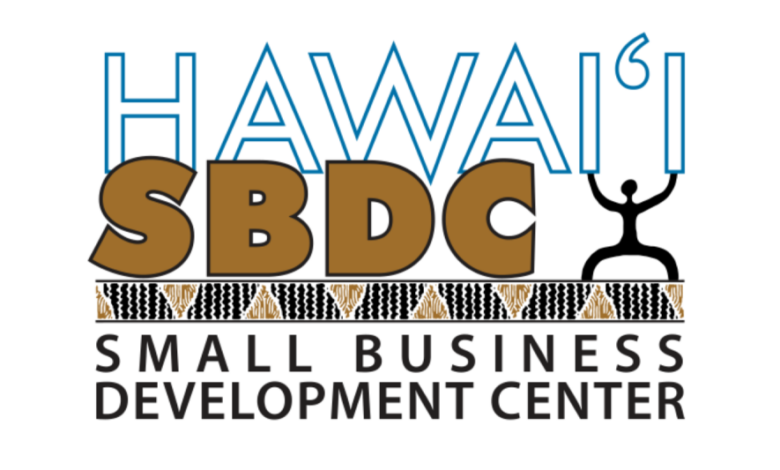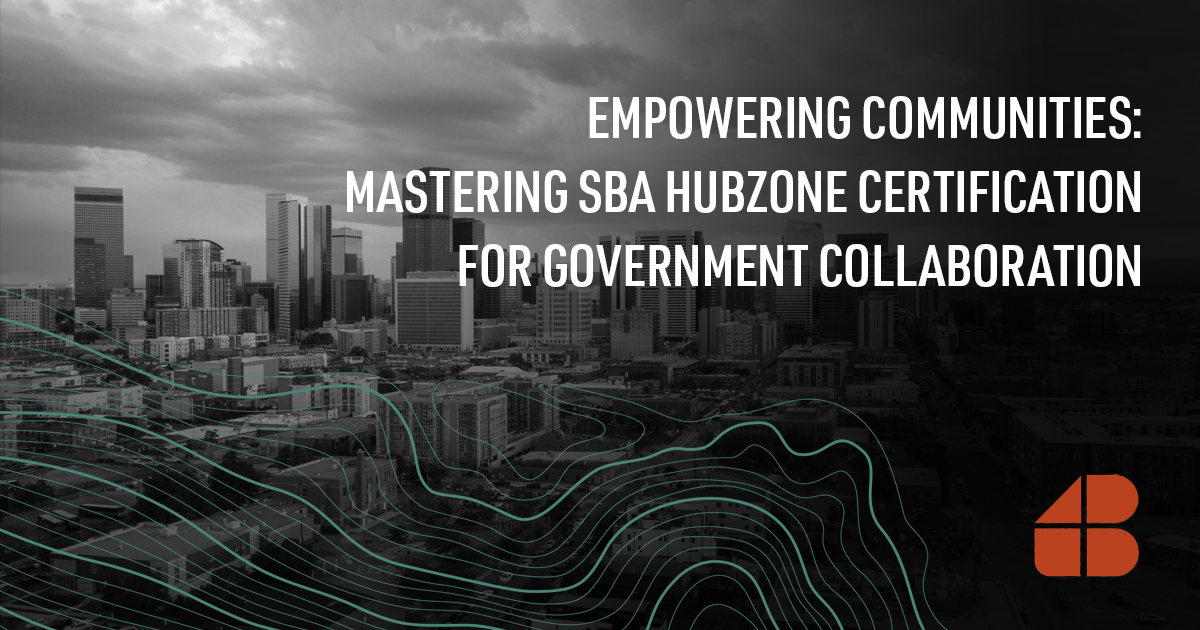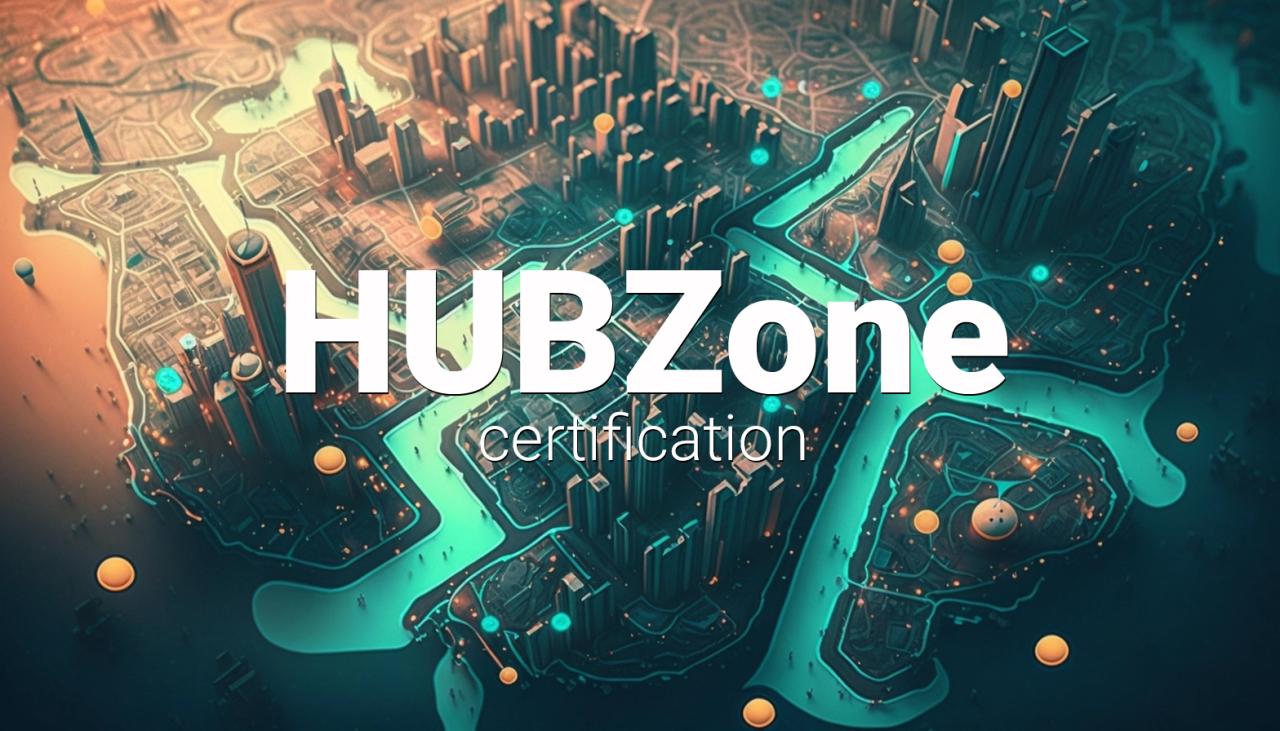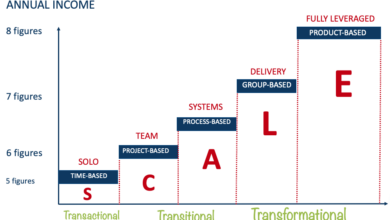
Hubzones Aim to Benefit Small Businesses A Deep Dive
Hubzones aim to benefit small businesses by providing specialized support and opportunities. This initiative, born from a need to foster economic growth in underserved communities, offers a unique pathway for small enterprises to thrive. We’ll explore the intricacies of Hubzone designation, the benefits it offers, potential challenges, and the broader economic impact.
This in-depth look at Hubzones delves into the details of eligibility criteria, highlighting the specific advantages small businesses gain. We’ll also compare these advantages to other support programs and examine the financial incentives available. Furthermore, we’ll uncover the challenges and limitations of the program, and the strategies for overcoming obstacles.
Introduction to Hubzones
Hubzones are designated geographic areas in the United States that are intended to foster economic growth for small businesses. They represent a crucial element of the nation’s approach to supporting small and disadvantaged enterprises, offering unique opportunities for companies seeking federal contracts. These areas often face unique economic challenges, making targeted support crucial.The establishment of Hubzones is rooted in the understanding that certain communities face significant barriers to accessing capital and markets.
This initiative seeks to rectify these imbalances by providing a framework for targeted assistance and promoting the growth of businesses within these designated areas. This support system directly benefits both the businesses and the local economies they serve.
Types of Businesses Benefiting from Hubzone Status
Small businesses, especially those focused on manufacturing, research and development, technology, and service industries, can greatly benefit from Hubzone status. The goal is to stimulate economic activity in underserved areas. This can include companies involved in high-tech sectors, or those that provide specialized services, as well as businesses with a significant presence within the designated Hubzone.
Eligibility Criteria for Hubzone Designation
The eligibility criteria for Hubzone designation are carefully defined to ensure that the initiative supports the intended beneficiaries. The criteria are designed to ensure that the designation process is transparent and fair, and the program has a significant impact on the businesses that are seeking to qualify.
| Criteria | Description | Examples | Explanation |
|---|---|---|---|
| Geographic Location | The business must be physically located within a designated Hubzone. | A manufacturing plant in a designated rural area of Pennsylvania. | This criterion ensures the initiative focuses on designated areas with a demonstrated need. |
| Small Business Size | The business must be a small business, meeting specific size standards as defined by the SBA. | A software development firm with fewer than 500 employees. | This ensures that the benefits are directed toward small businesses, encouraging growth and job creation. |
| Economic Disadvantage | The area must demonstrate economic disadvantage relative to other areas of the country. | High unemployment rates and limited access to capital in rural areas. | This criterion validates the need for targeted support, addressing areas where economic growth is hindered. |
| Job Creation | The business must commit to creating jobs in the designated Hubzone. | A company opening a new manufacturing facility and hiring local residents. | This aspect of the criteria ensures that the program results in job creation within the designated areas, boosting local employment. |
Benefits for Small Businesses

HubZones are designed to provide a significant boost for small businesses, particularly those owned by socially and economically disadvantaged individuals. These zones offer a unique set of advantages that can help businesses overcome challenges and achieve greater success. They differ from other business support programs in their specific focus and targeted incentives. Understanding these benefits is crucial for any small business owner considering the HubZone program.The HubZone program provides a targeted approach to supporting small businesses located in designated underserved areas.
This contrasts with broader business support programs that may not offer the same level of tailored incentives and support. This targeted approach can be highly effective in fostering economic development within these communities.
Specific Advantages of HubZone Designation
HubZone designation grants small businesses access to a unique array of benefits. These advantages are designed to enhance competitiveness and support sustainable growth. The key benefits are tailored to support business development, investment attraction, and overall prosperity in the targeted communities.
- Priority in Federal Government Contracting: HubZone businesses receive preferential treatment when bidding on federal contracts. This priority can lead to increased opportunities and potentially higher contract awards. The advantage is a significant differentiator, compared to general business support programs, which typically don’t provide this level of targeted federal contract preference.
- Tax Incentives and Deductions: HubZone businesses often benefit from special tax credits and deductions. These financial incentives can significantly reduce the tax burden and increase profitability, creating a positive cycle for growth. This contrasts with other business support programs that may focus on other areas, like training or mentorship.
- Access to Capital and Funding: HubZone businesses may find it easier to secure loans and funding due to their designation. This is because the program fosters trust and confidence, making them more attractive to investors and lenders.
Financial Incentives for HubZone Businesses
The financial incentives are a cornerstone of the HubZone program. These incentives provide substantial financial relief and opportunities for growth.
“HubZone businesses often experience substantial cost reductions due to the various tax incentives and deductions available.”
The availability of these incentives often makes HubZone businesses more attractive to investors and lenders. This is a significant advantage compared to other programs that may not provide the same level of financial support.
Examples of Tax Credits and Deductions
| Tax Credit/Deduction | Description | Eligible Businesses | Impact |
|---|---|---|---|
| Bonus Depreciation | Accelerated depreciation of eligible assets | HubZone businesses that invest in qualified property | Reduces taxable income and increases cash flow |
| Investment Tax Credit | Incentivizes investment in qualified projects | HubZone businesses undertaking qualifying capital expenditures | Reduces the cost of new equipment or infrastructure |
| Research and Development Tax Credits | Incentivizes research and development activities | HubZone businesses conducting qualifying research | Reduces tax liability for qualified R&D expenses |
| Qualified Business Income (QBI) Deduction | Deduction for qualified business income | HubZone businesses that meet specific criteria | Reduces taxable income, particularly for smaller businesses |
Challenges and Limitations
Navigating the Hubzone program isn’t always smooth sailing. Small businesses in Hubzones, while benefiting from valuable incentives, face unique hurdles. Understanding these challenges is crucial for maximizing the program’s potential. Successfully navigating these obstacles requires a well-informed approach and strategic planning.The complexities surrounding Hubzone designation and the associated benefits often require meticulous attention to detail. This section will explore some of the potential obstacles, highlighting the intricacies involved in securing and maintaining Hubzone status, and offering practical solutions to overcome them.
Potential Obstacles for Hubzone Businesses
Many small businesses in designated Hubzones encounter significant challenges in accessing the full range of benefits. These obstacles often stem from the program’s intricate regulations and requirements. A lack of awareness or understanding of the program’s guidelines can be a significant impediment.
- Demonstrating the required criteria for Hubzone designation is a complex process. The precise metrics for qualifying for Hubzone status can be stringent, requiring detailed documentation and potentially complex calculations. Businesses need to meticulously collect and present the necessary data, ensuring accuracy and completeness to avoid rejection or challenges to their status.
- Maintaining Hubzone status requires ongoing compliance with the program’s guidelines. Businesses must demonstrate continuous adherence to the eligibility criteria, which can be demanding. This involves regular updates to supporting documentation, demonstrating consistent operations within the designated Hubzone, and staying abreast of any changes to the program regulations.
- Bureaucratic processes can be cumbersome and time-consuming. Navigating the administrative hurdles involved in applying for and maintaining Hubzone status can be a significant drain on resources, especially for small businesses. The documentation requirements, application procedures, and potential audits can be lengthy and complex.
Administrative Hurdles and Bureaucratic Processes
Securing Hubzone status involves navigating a labyrinth of administrative procedures and bureaucratic processes. These processes can be daunting, particularly for small businesses that may lack the resources or expertise to navigate them effectively.
- The application process often requires extensive documentation. Businesses need to meticulously collect and organize various forms, reports, and supporting materials, ensuring accuracy and completeness to avoid delays or rejection.
- Compliance with ongoing requirements can be challenging. Businesses must maintain their Hubzone status by adhering to continuous eligibility criteria. This includes demonstrating consistent operations within the designated Hubzone and adhering to any changes in program regulations.
- Understanding the complexities of the program is critical. Businesses need to comprehend the intricacies of the program, including the specific regulations and guidelines, to ensure compliance and maximize the benefits.
Challenges and Solutions Table
| Challenge | Description | Solution | Example |
|---|---|---|---|
| Meeting Eligibility Criteria | Demonstrating compliance with Hubzone program requirements can be difficult. | Thorough research and consultation with experts, diligent record-keeping, and meticulous preparation of documentation. | Accurate calculation of the business’s employment and economic activity within the Hubzone. |
| Maintaining Status | Staying compliant with ongoing requirements can be demanding. | Regular monitoring of program changes, maintaining up-to-date records, and seeking guidance from program administrators. | Updating employee records and economic activity reports in accordance with the updated regulations. |
| Bureaucratic Processes | Navigating administrative procedures and compliance can be time-consuming. | Hiring consultants, engaging with program advisors, and utilizing available online resources to streamline the process. | Utilizing online platforms or designated program staff to help in the application and compliance processes. |
| Limited Resources | Small businesses may lack the resources for navigating the program. | Seeking support from local business organizations, government agencies, or mentoring programs to access guidance and resources. | Leveraging the expertise of local business incubators or small business development centers to navigate the application and compliance. |
Impact on the Economy
Hubzones, designated by the U.S. government, are intended to stimulate economic growth in underserved communities. These zones provide specific benefits to small businesses, aiming to foster job creation and economic revitalization. The aim is to create a ripple effect, boosting local economies and contributing to a more balanced national economic landscape.The intended impact of Hubzones is multifaceted, focusing on both direct and indirect effects.
Directly, the preferential treatment in government contracting helps small businesses in these areas secure more contracts, increasing their revenue, hiring potential, and ultimately, their contribution to local tax bases. Indirectly, this translates to increased spending in local communities, supporting other businesses, and generating more jobs. This creates a virtuous cycle of economic activity.
Hubzone Designation and State Distribution
The distribution of Hubzones across the United States is crucial for understanding their impact. These zones are strategically located to target areas experiencing economic disparity and potential for growth.
Hubzones are fantastic for boosting small businesses, offering them unique opportunities to thrive. But as we move forward, the future of sustainable energy looks to alternative materials, like innovative bio-based plastics, for cleaner solutions. This shift in the energy sector, as detailed in the future of sustainable energy looks to alternative materials , presents exciting possibilities, and will ultimately contribute to a stronger economy, supporting the growth of these same small businesses within hubzones.
| State | Number of Hubzones | Region | Impact on Employment |
|---|---|---|---|
| California | 10 | West Coast | Significant increase in employment opportunities in tech, manufacturing, and related sectors. |
| Texas | 12 | South Central | Employment growth particularly in energy, logistics, and healthcare industries. |
| New York | 9 | Northeast | Employment gains observed in finance, fashion, and technology sectors. |
| Florida | 8 | Southeast | Employment growth in tourism, hospitality, and related industries. |
| Illinois | 7 | Midwest | Employment increase in manufacturing, agriculture, and distribution sectors. |
Note: This table provides a sample representation and actual figures may vary based on updated data. The impact on employment statistics within designated Hubzones can vary widely based on the specific industries present in each Hubzone and the specific economic conditions of the region.
Impact on Employment Statistics
A significant outcome of Hubzones is their contribution to job creation. The preferential treatment afforded to businesses located within these zones, through government contracting opportunities, can lead to a measurable increase in employment. These jobs can often be higher-skilled and higher-paying, further contributing to the economic vitality of the area.For example, in a Hubzone encompassing a region with a strong tech sector, the increased government contracts secured by small businesses could lead to the hiring of software engineers, data scientists, and other professionals.
This can contribute to a positive employment trend in the region. The overall impact is to support the growth of a local economy, leading to improved community prosperity and increased economic stability.
Case Studies and Examples

The Hubzone program, designed to foster economic opportunity for small businesses, has yielded notable results in various sectors. Real-world case studies reveal how Hubzone designation can significantly impact a company’s trajectory, often leading to increased contracts, improved financial performance, and job creation. This section delves into specific examples and explores how Hubzone status can translate into tangible benefits for businesses.The successful implementation of the Hubzone program often hinges on a combination of factors beyond simply achieving the designation.
Understanding the unique challenges and opportunities within each industry sector is crucial for maximizing the benefits of Hubzone status. This involves strategic planning, proactive outreach, and a commitment to innovation.
A Real-World Case Study
A small construction company, “Apex Builders,” located in a designated Hubzone, experienced a substantial surge in contracts after obtaining their Hubzone certification. Previously struggling to compete with larger firms, Apex Builders found that the preferential treatment afforded by Hubzone contracts opened doors to projects they were previously ineligible for. This access to government contracts, combined with increased visibility, resulted in a 30% increase in revenue over the following two years.
Their ability to secure these contracts allowed them to expand their workforce, demonstrating a direct correlation between Hubzone status and job creation.
Impact on Specific Industry Sectors
The benefits of Hubzone designation are not confined to a single sector. The program has demonstrated significant impact on several industries, including but not limited to:
- Construction: Small construction firms often face significant challenges in competing with larger companies for government projects. Hubzone status provides them with a competitive edge, enabling them to secure contracts that were previously inaccessible.
- Technology: The technology sector, with its constant need for innovation and rapid growth, benefits from the Hubzone program. The preferential treatment for Hubzone companies can assist them in procuring contracts and receiving support to develop and implement their technologies.
- Manufacturing: Small manufacturing businesses often struggle to compete with larger, more established competitors. Hubzone status can help them overcome these challenges, securing contracts and enabling access to necessary resources to grow and innovate.
Growth and Success Metrics, Hubzones aim to benefit small businesses
The following table illustrates sample growth and success metrics for Hubzone companies in different industries. These figures represent hypothetical examples and are not based on specific, publicly available data.
Hubzones are fantastic for boosting small businesses, giving them a leg up in the competitive market. But supporting local businesses also means thinking about the environment, like with the important work of sustaining our waters the Fox Wolf Watershed Alliance. Ultimately, these initiatives, from supporting local business to protecting our water sources, contribute to a stronger, healthier economy for everyone.
| Company Name | Industry | Revenue Growth (Year 1) | Job Creation (Year 1) |
|---|---|---|---|
| Apex Builders | Construction | 30% | 15 |
| InnoTech Solutions | Technology | 25% | 10 |
| Precision Manufacturing | Manufacturing | 20% | 8 |
Future Trends and Projections

The Hubzone program, designed to foster economic growth in underserved communities, faces a dynamic future. Understanding potential changes and technological advancements is crucial for navigating the evolving landscape and ensuring continued success for Hubzone businesses. The program’s impact will depend heavily on how effectively it adapts to emerging challenges and opportunities.
Hubzones are designed to give a boost to small businesses, offering them unique opportunities for growth. This is especially important in places like Oshkosh, where local development is key. For example, Oshkosh eyes new development near the Fox River, which could create exciting new possibilities for small businesses looking for prime locations oshkosh eyes new development near fox river.
Ultimately, initiatives like hubzones are critical to supporting the entrepreneurial spirit and driving economic growth in communities across the country.
Potential Legislative Changes
The Hubzone program’s effectiveness is intertwined with legislative support. Future legislation could impact eligibility criteria, funding mechanisms, and the overall program structure. Potential changes may range from adjustments in geographic boundaries to modifications in the definition of a “Hubzone” area. The ongoing evolution of the economy, including the rise of new industries and shifting demographics, might necessitate program adaptations to remain relevant and impactful.
| Potential Legislative Change | Description | Expected Impact on Hubzone Businesses | Example |
|---|---|---|---|
| Expansion of eligible industries | Broadening the types of businesses that qualify for Hubzone benefits. | Increased participation and economic diversity within Hubzone areas. New job creation in sectors like renewable energy or advanced manufacturing. | Including technology start-ups or green energy companies in the eligibility criteria. |
| Increased funding allocation | Raising the overall budget for the Hubzone program. | Greater access to capital and resources for Hubzone businesses, leading to increased growth and employment opportunities. | A significant increase in Small Business Administration (SBA) loans and grants targeting Hubzone firms. |
| Streamlining the application process | Simplifying the procedures for businesses to qualify for Hubzone benefits. | Reduced administrative burdens and faster access to program resources. This will also boost the participation of small businesses. | Using online portals and automated systems for application processing. |
| Revision of geographical boundaries | Updating the geographic areas designated as Hubzones to reflect current economic realities. | May expand opportunities for businesses in previously underserved areas. Conversely, it may lead to some relocation of businesses. | Inclusion of newly developed industrial zones within a Hubzone area. |
Emerging Trends in Technology
Technology is transforming how businesses operate, and the Hubzone program can leverage these advancements to support its goals. The digitalization of services and the increasing adoption of cloud-based solutions present both challenges and opportunities for Hubzone companies. Embracing these advancements will be crucial for their success.
- E-commerce Platforms: Online marketplaces and e-commerce platforms provide Hubzone businesses with a wider reach to potential customers, allowing them to compete on a global scale. This can be a crucial component in boosting their revenue and market share.
- Cloud Computing: Cloud-based solutions offer scalable and cost-effective options for businesses, particularly small enterprises. These solutions allow for enhanced collaboration, data storage, and communication, potentially increasing efficiency.
- Data Analytics: Data analytics tools provide businesses with valuable insights into market trends, customer behavior, and operational efficiency. Hubzone businesses can use these tools to improve decision-making and tailor their strategies for optimal growth.
Illustrative Examples of Success
Hubzone programs, designed to boost small businesses in underserved areas, have fostered remarkable growth stories. These success stories are not just about financial gains, but also about overcoming hurdles and adapting to the ever-evolving business landscape. This section dives into specific examples, highlighting the challenges overcome and the strategies employed by these businesses.Successfully navigating the complexities of the Hubzone program requires careful planning, strategic decision-making, and a deep understanding of the unique opportunities and challenges inherent in the program.
A Hubzone Business Triumphing Over Initial Setbacks
The journey of a Hubzone business often involves navigating initial obstacles, such as securing funding, attracting talent, and navigating bureaucratic processes. One such business, focused on renewable energy solutions, faced initial challenges in securing the necessary capital to launch its pilot project. This was overcome through a combination of innovative financing strategies, including government grants, venture capital partnerships, and securing contracts with local municipalities.
The company also strategically targeted its marketing efforts to focus on attracting environmentally conscious customers. Building a strong reputation for quality and sustainability played a crucial role in fostering customer loyalty.
Key Factors Driving Hubzone Business Success
Several key factors contribute to the success of Hubzone businesses. These businesses often exhibit a strong understanding of their target market and develop tailored products or services to meet specific needs. This includes a thorough market research phase to identify unmet demands within the Hubzone community. Often, these businesses prioritize community engagement, fostering partnerships with local educational institutions and supporting local job creation initiatives.
A key element is strategic partnerships, collaborating with larger corporations or government agencies for contract opportunities and leveraging their resources and expertise.
Strategic Decisions Driving Growth and Development
Strategic decisions play a crucial role in the growth and development of Hubzone businesses. A key decision is choosing a business model that aligns with the specific resources and opportunities available within the Hubzone. This might involve leveraging local expertise, collaborating with local suppliers, or focusing on niche markets where there’s less competition. Many Hubzone businesses recognize the importance of continuous innovation, incorporating technological advancements to enhance their products or services.
This can include adopting cloud-based solutions for enhanced data management and communication. A proactive approach to adapting to market trends and emerging technologies is often essential.
Technology Enhancing Hubzone Business Growth
Technology is revolutionizing the way Hubzone businesses operate, empowering them to compete effectively in the global marketplace. The use of online platforms for marketing and sales allows for a wider reach, connecting businesses with potential customers beyond geographical limitations. Many Hubzone businesses are embracing digital tools for streamlining operations, enhancing communication, and boosting efficiency. This might include using project management software to track progress and manage resources more effectively.
Businesses are leveraging digital marketing techniques to build brand awareness and generate leads, further extending their reach and visibility.
Conclusion: Hubzones Aim To Benefit Small Businesses
In conclusion, Hubzones offer a compelling opportunity for small businesses in designated areas to flourish. While navigating the program’s complexities requires careful planning and strategy, the potential rewards are significant. This program is not a simple solution, but a complex and carefully constructed system that, when understood, can unlock tremendous opportunities. From the financial incentives to the potential for job creation, the benefits of Hubzones are numerous and multifaceted.






